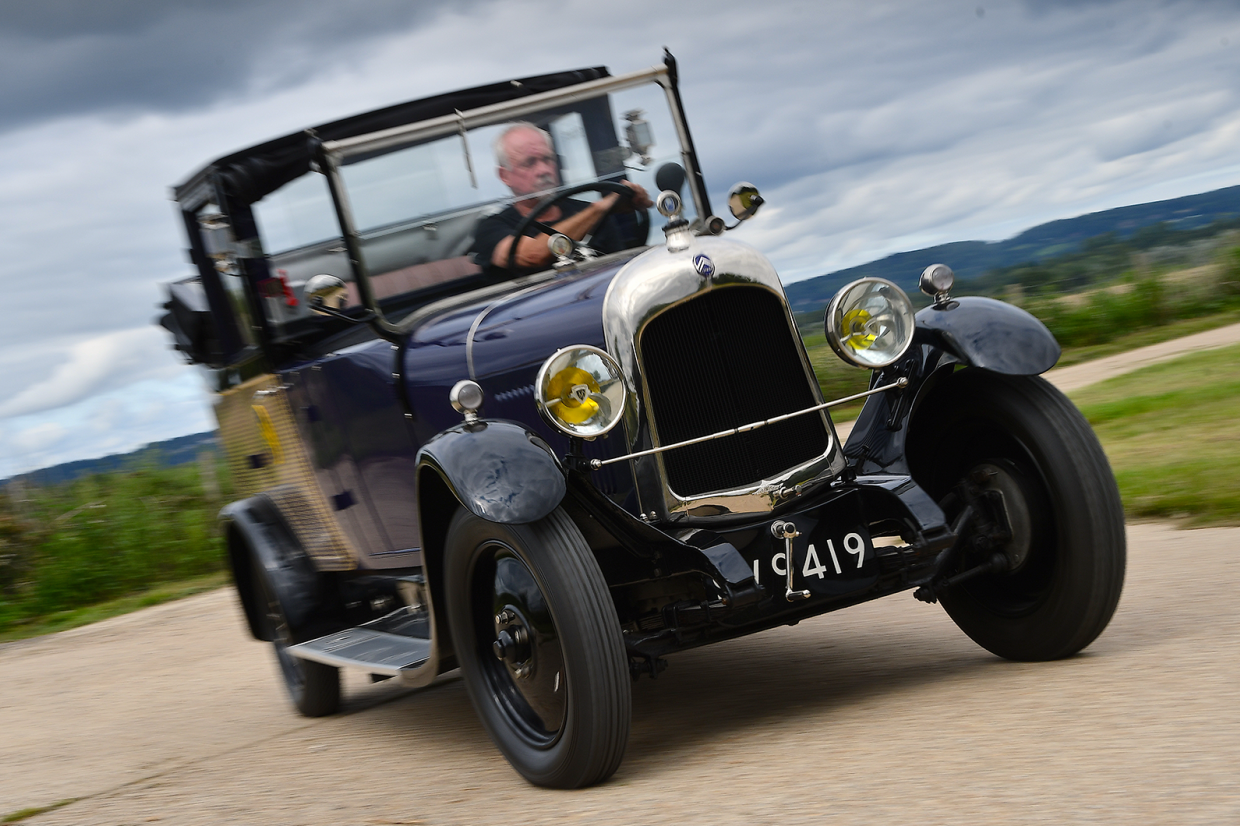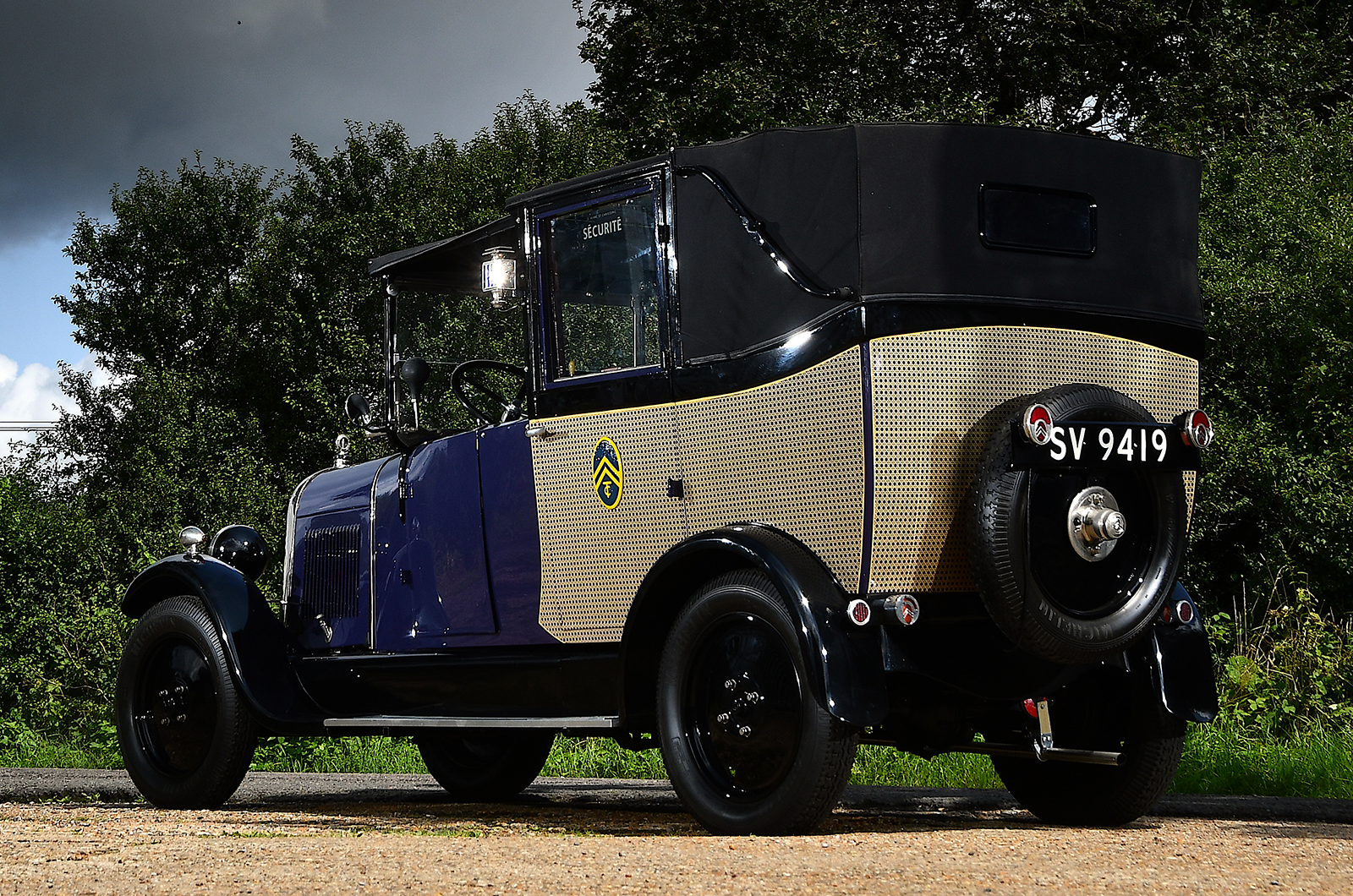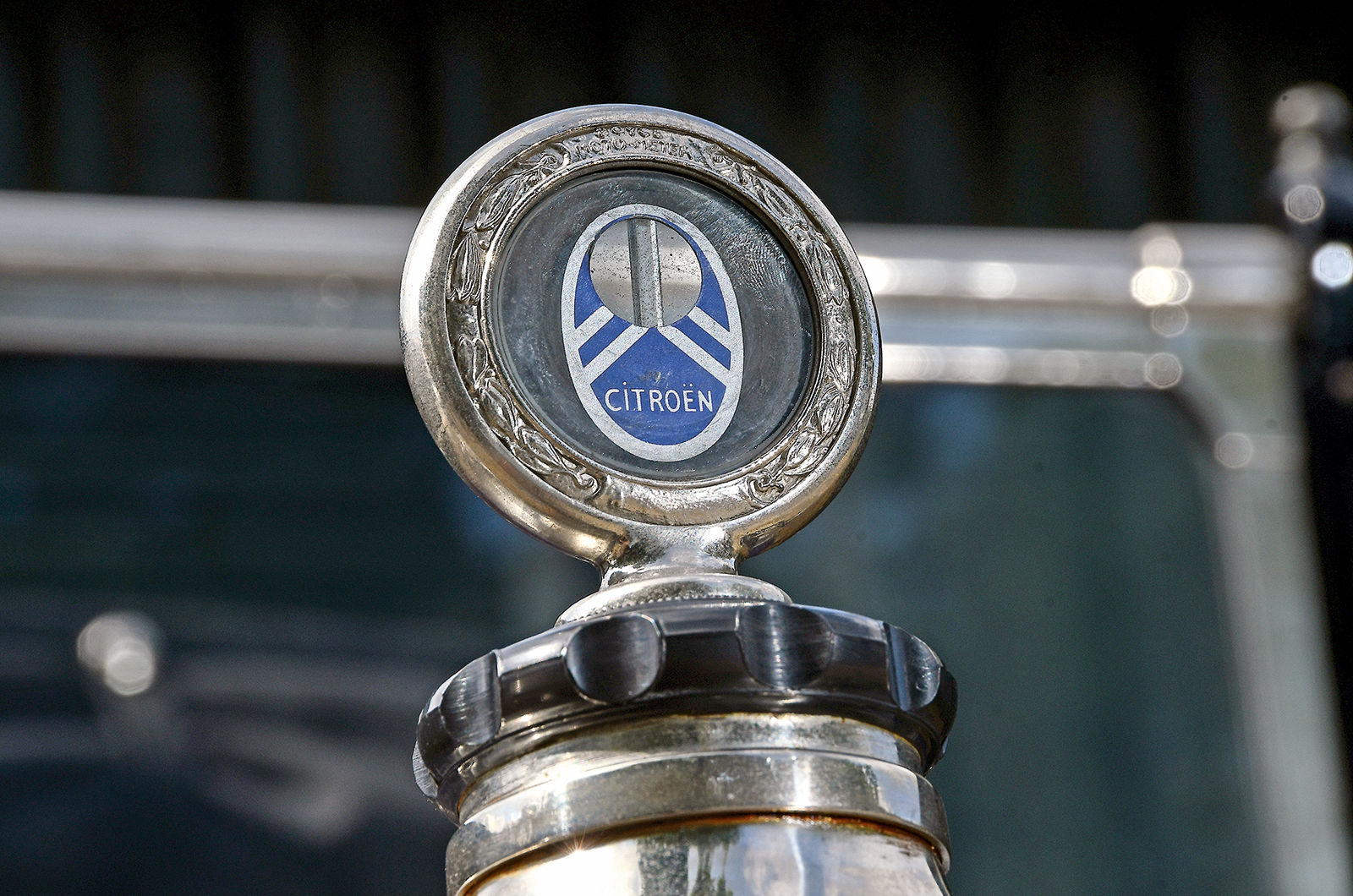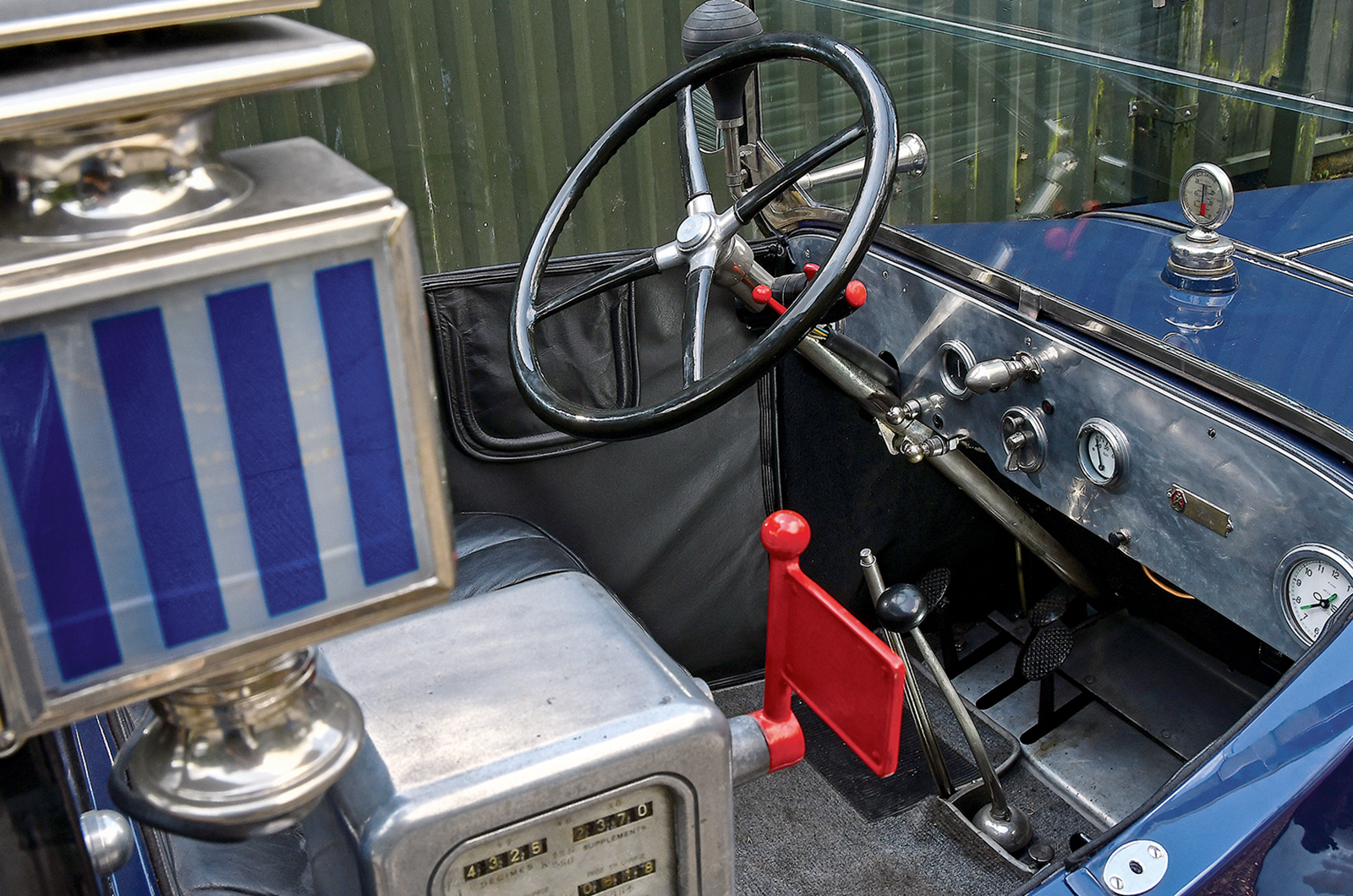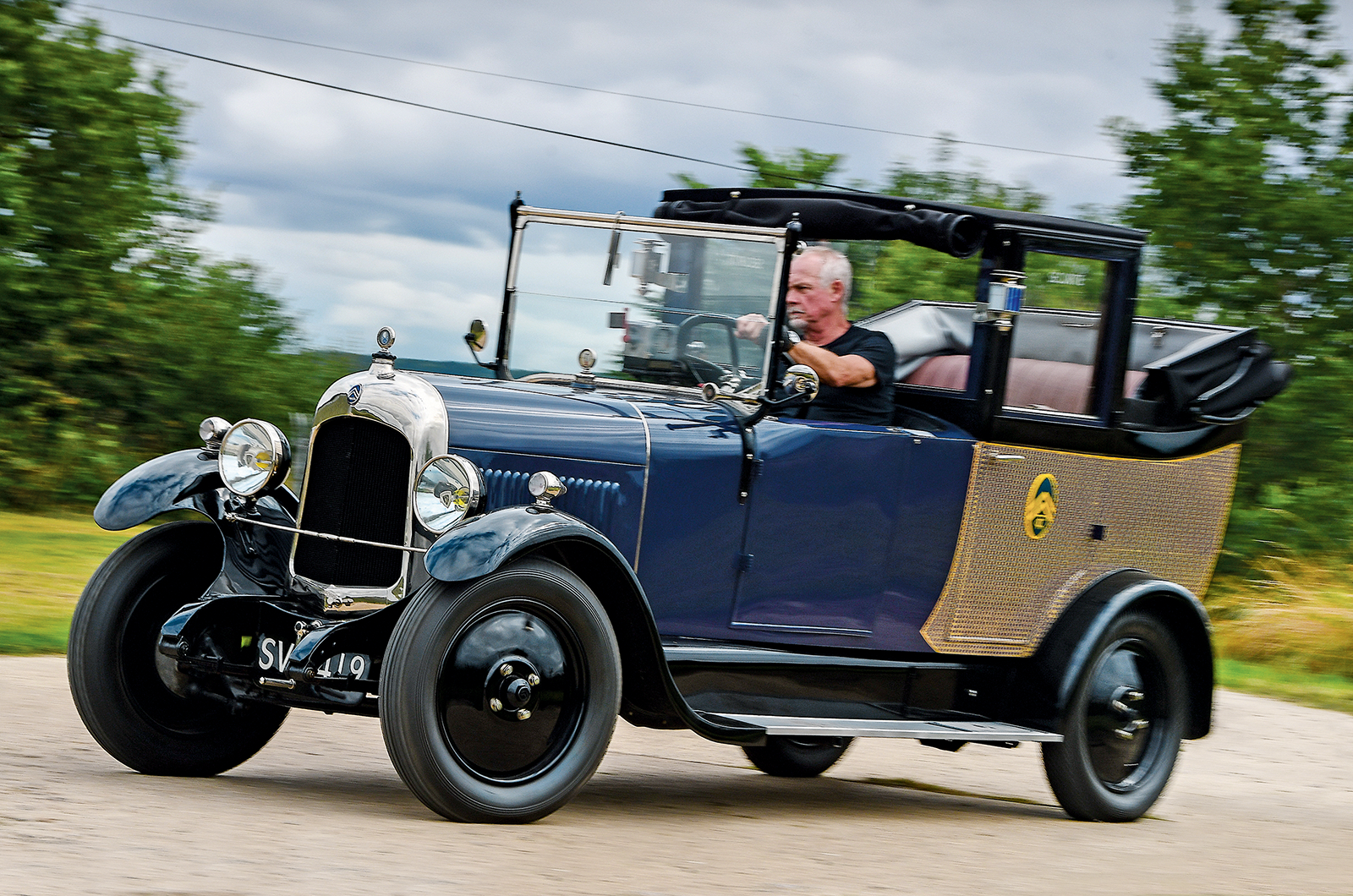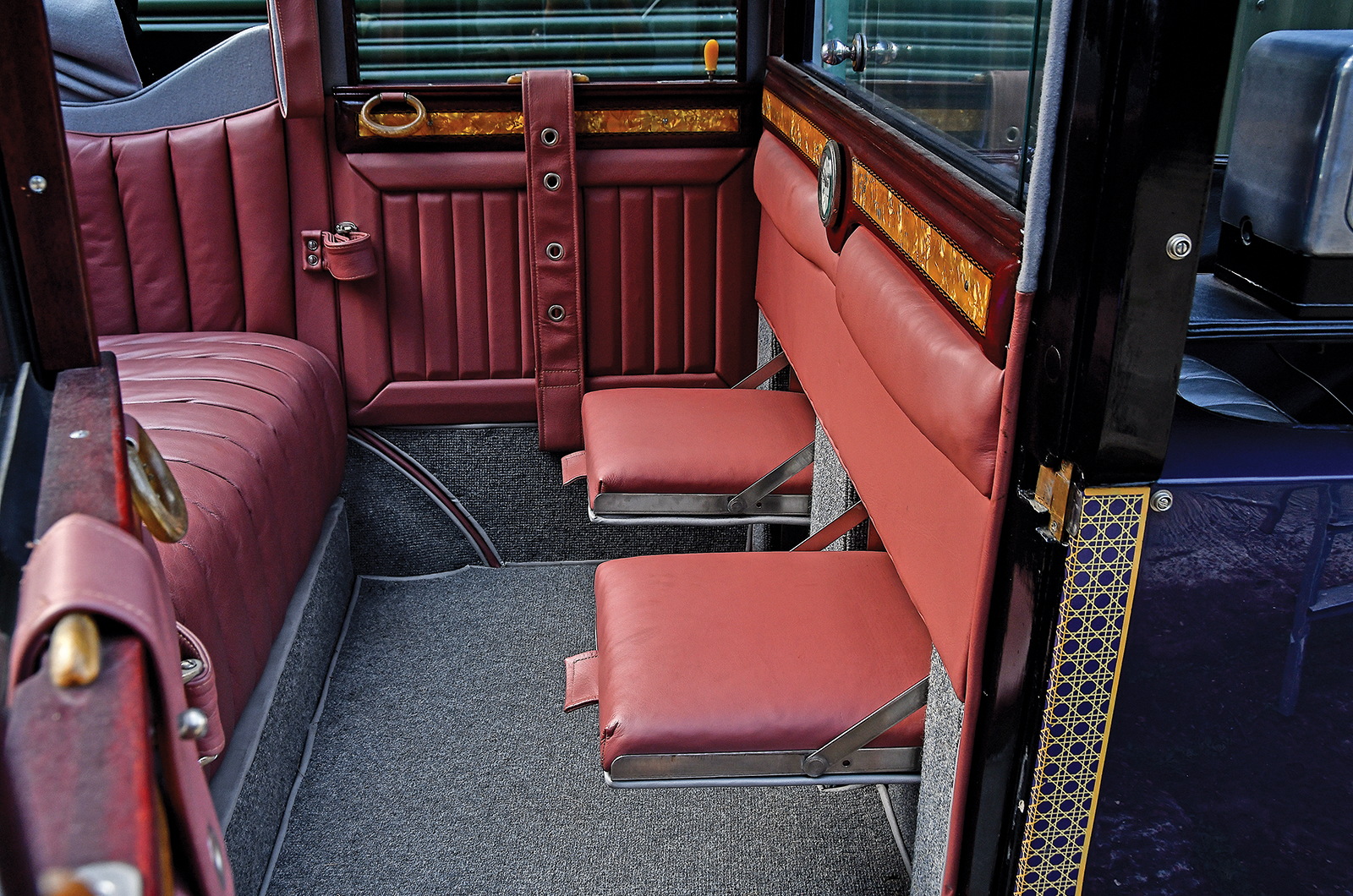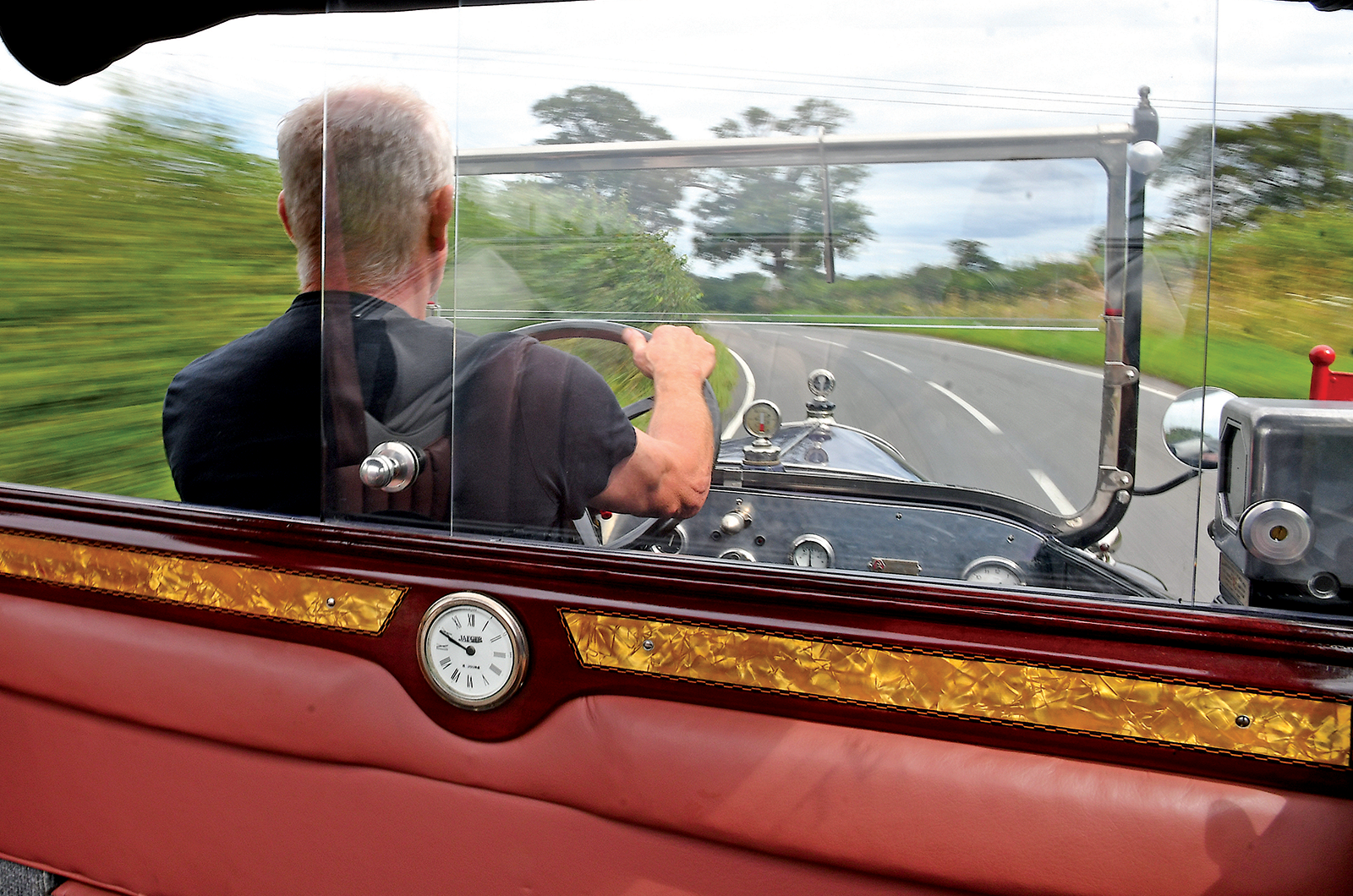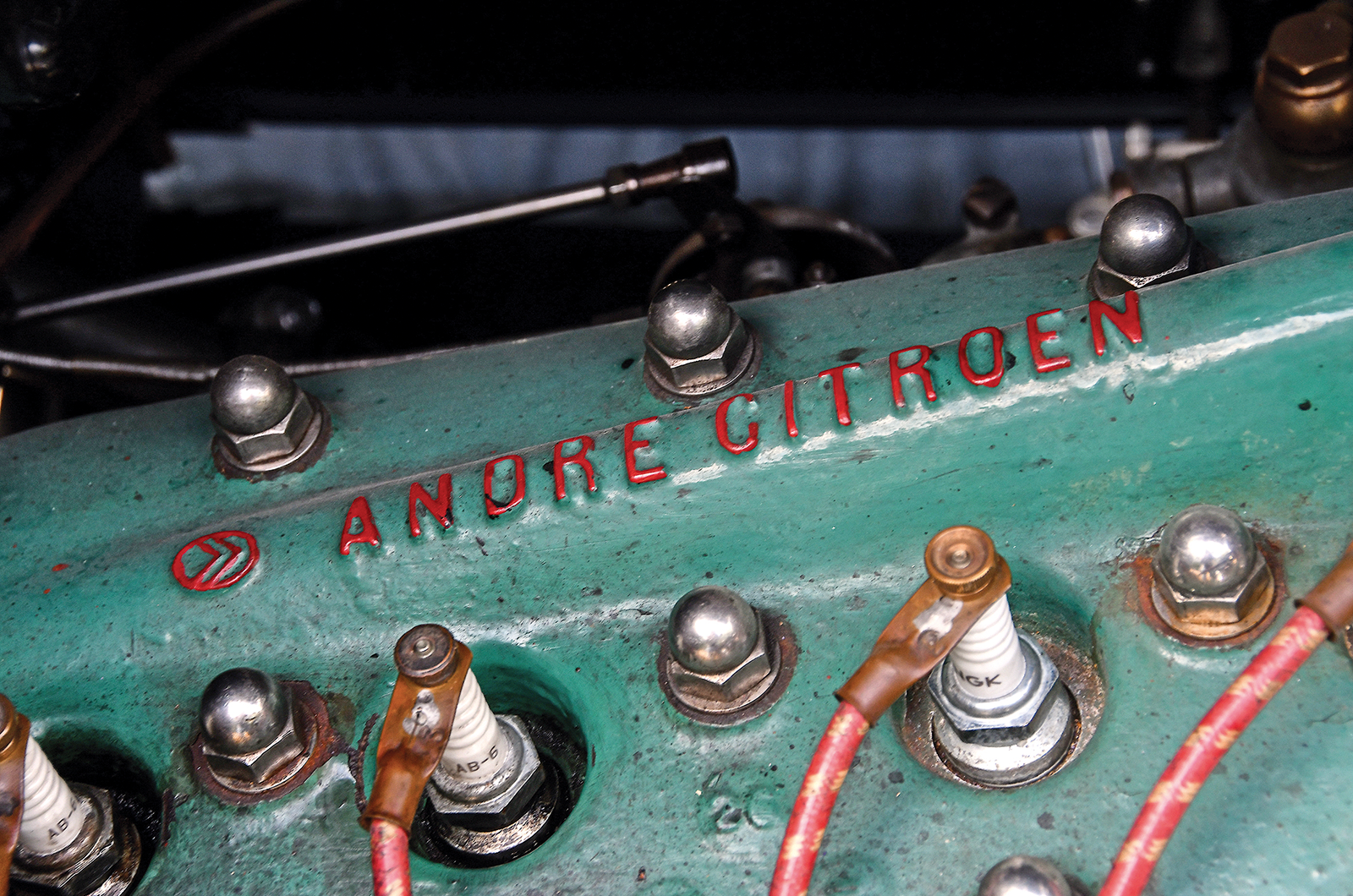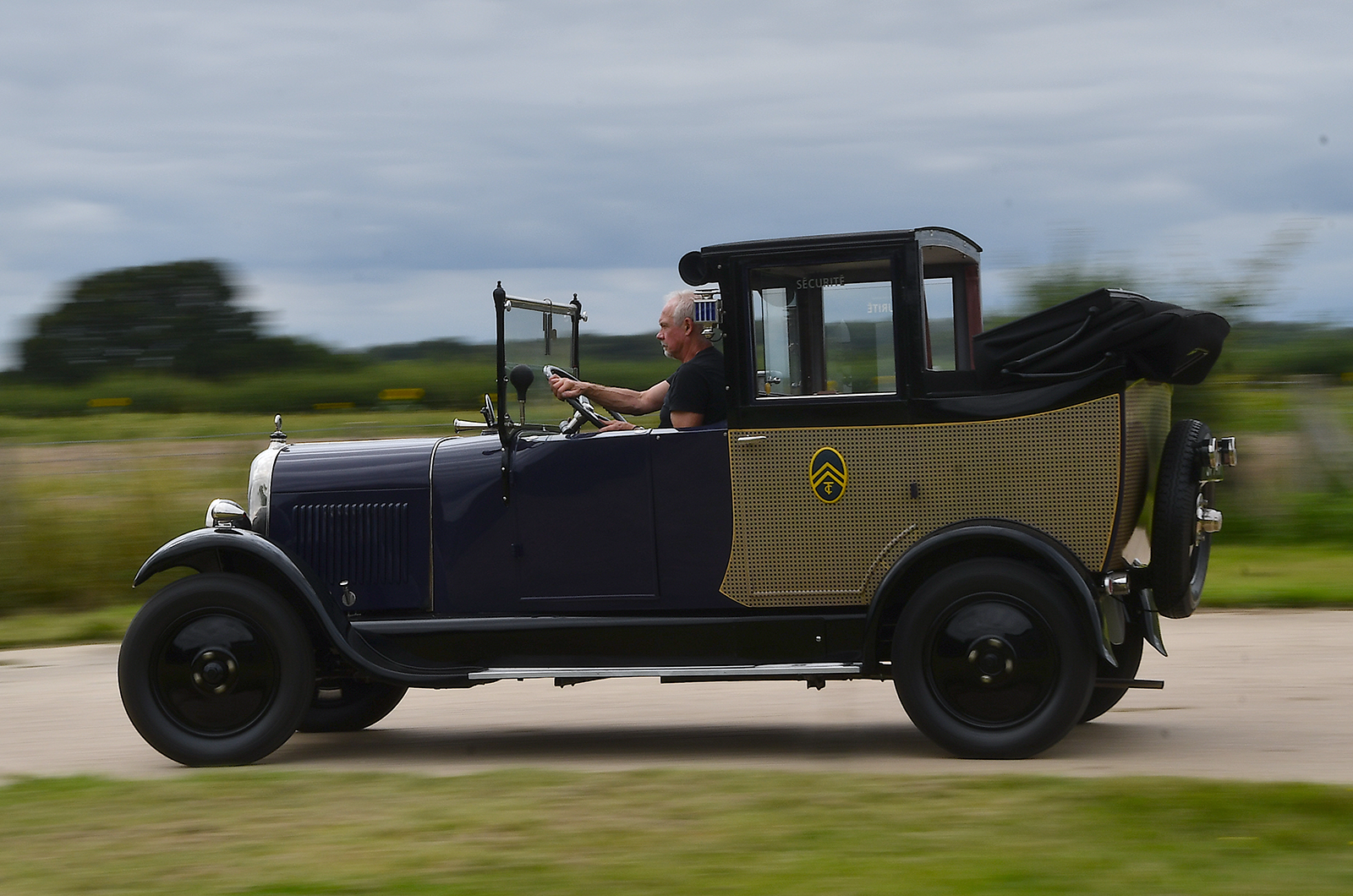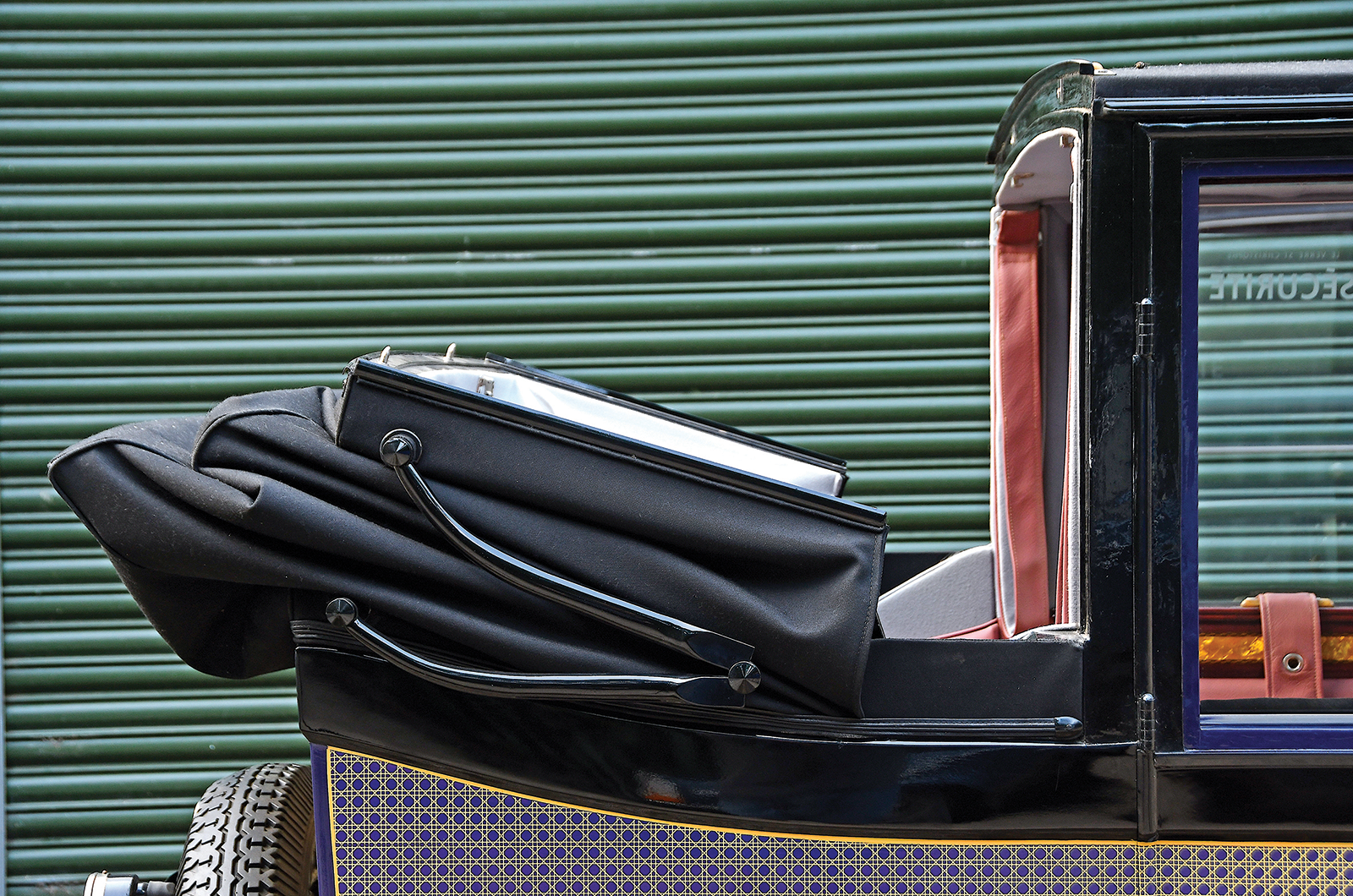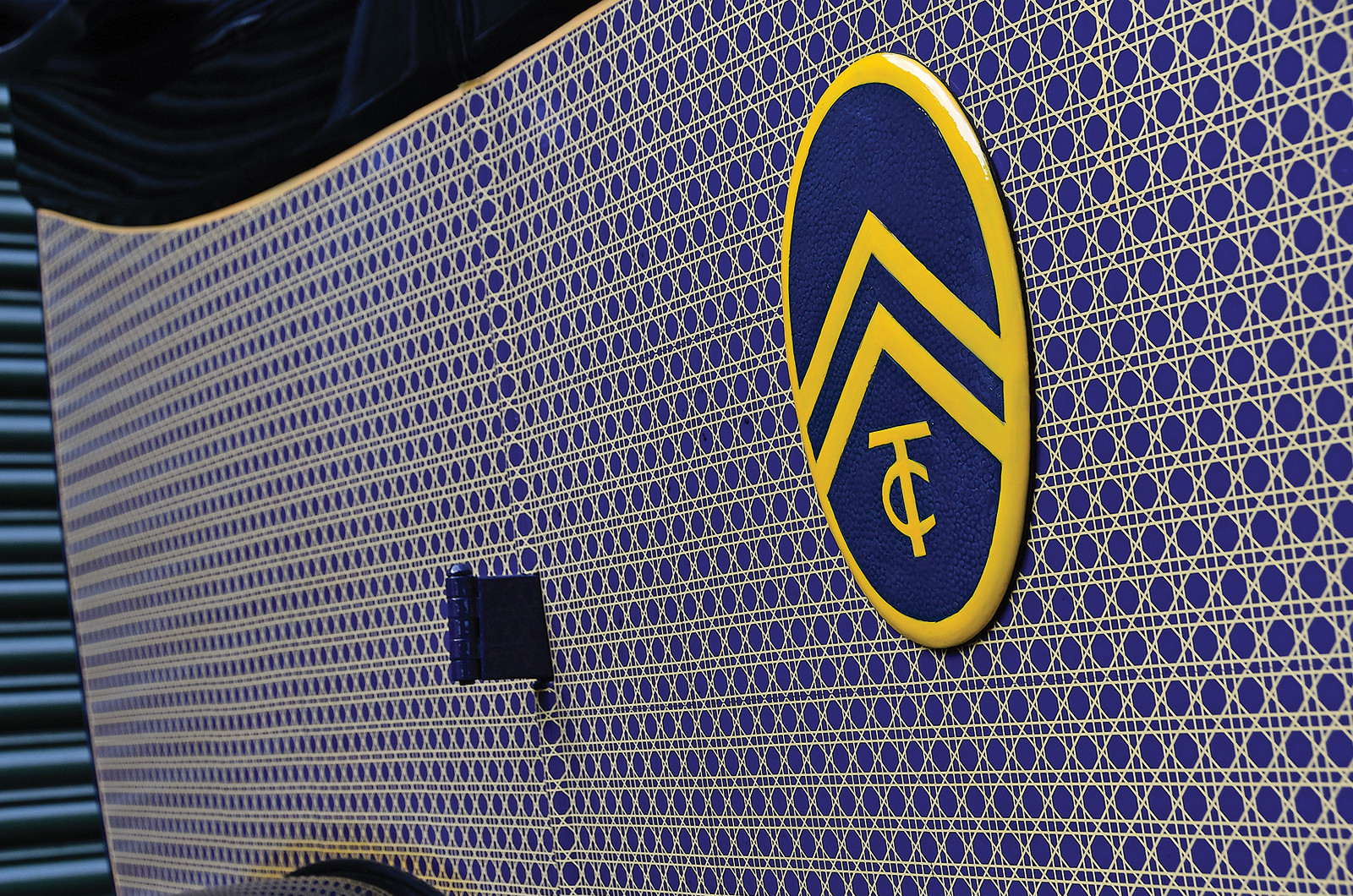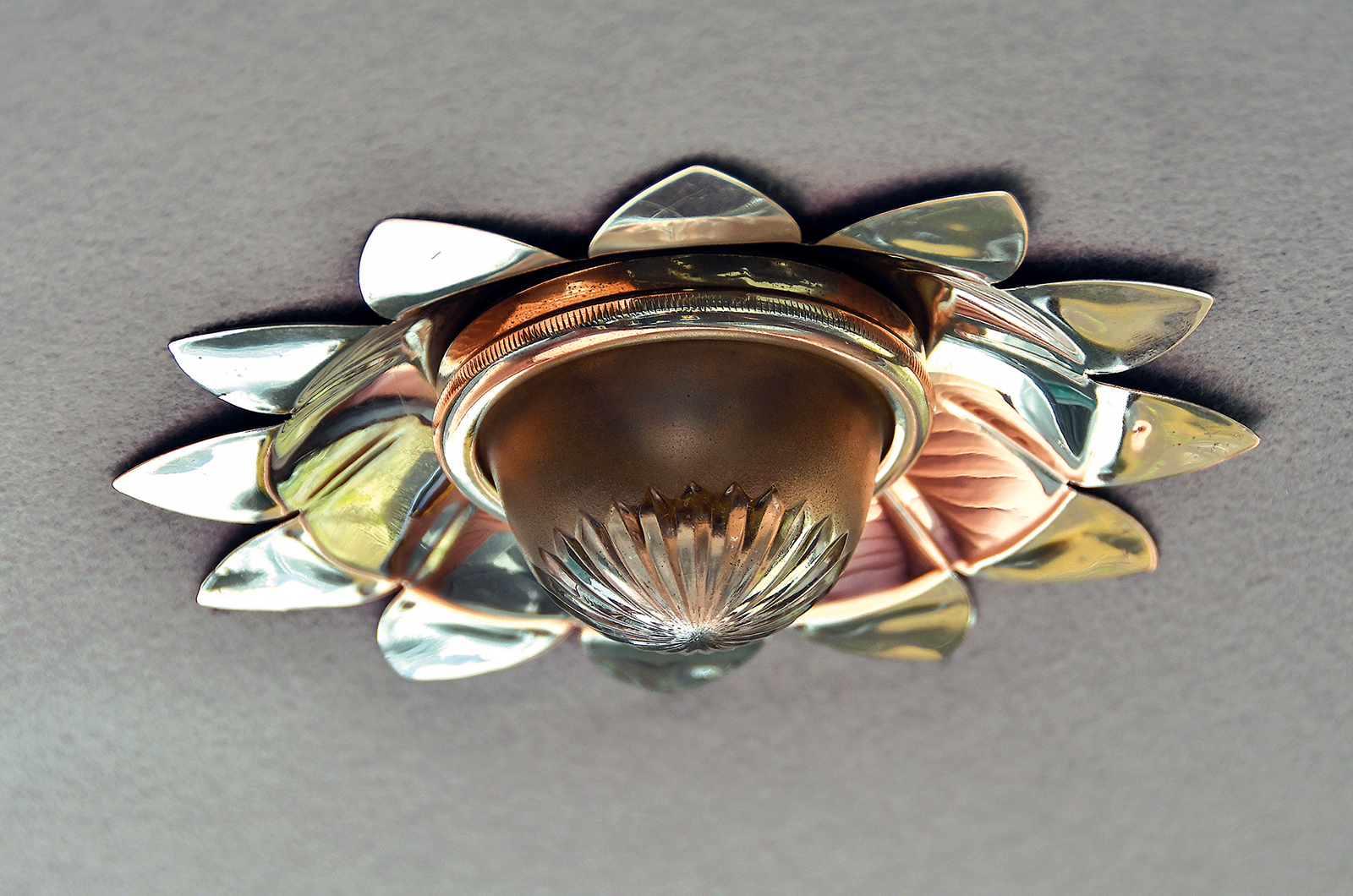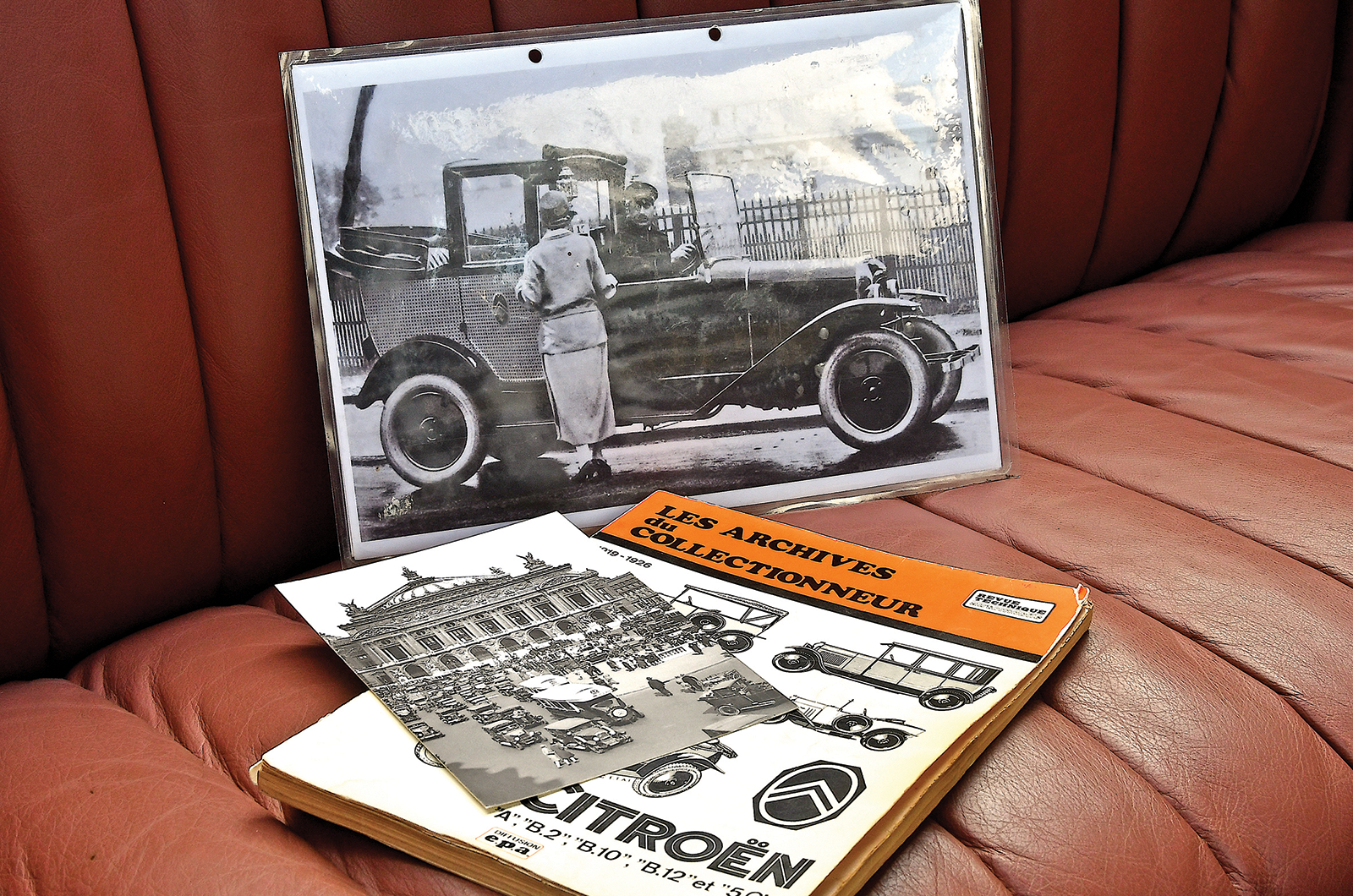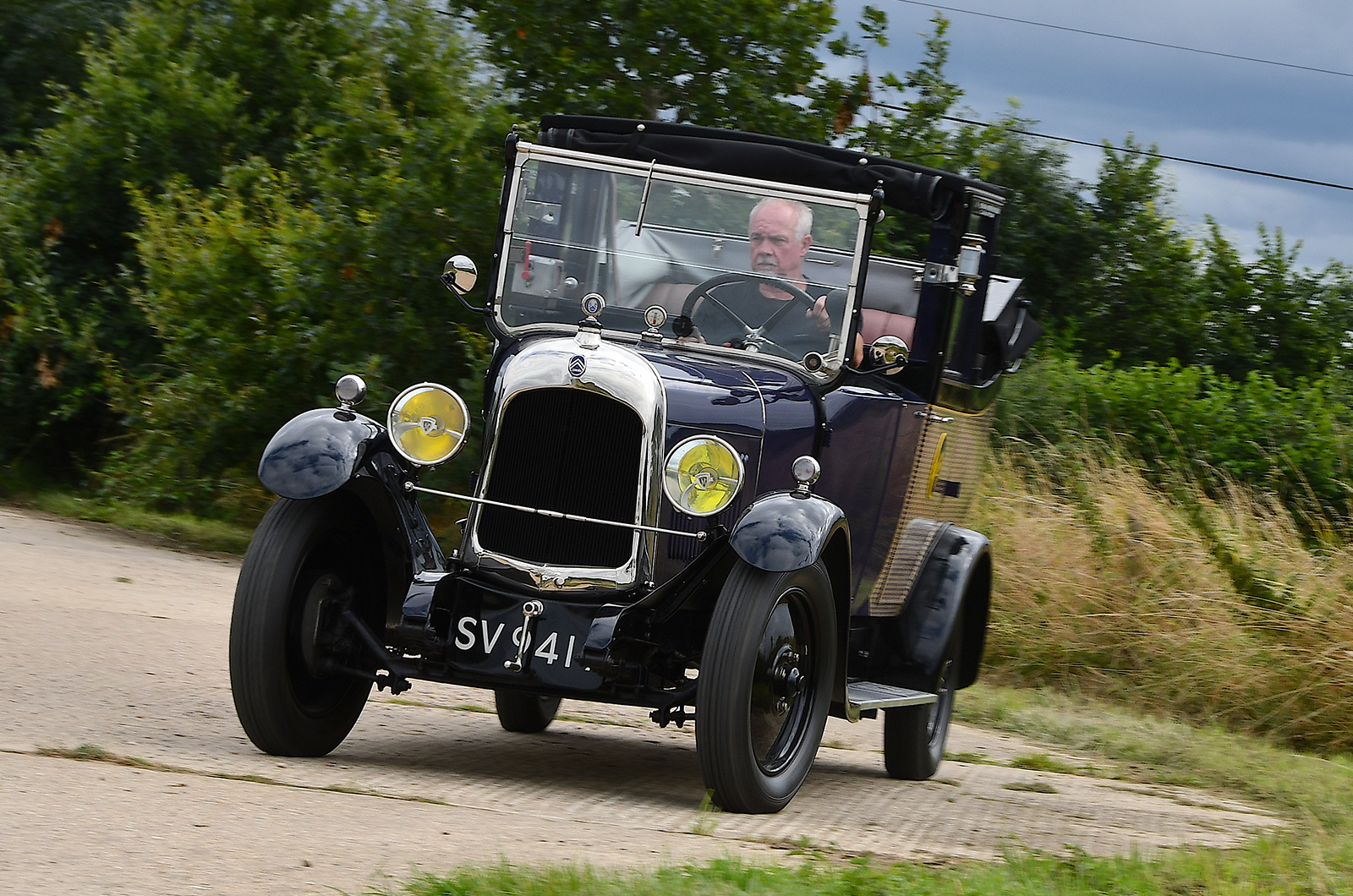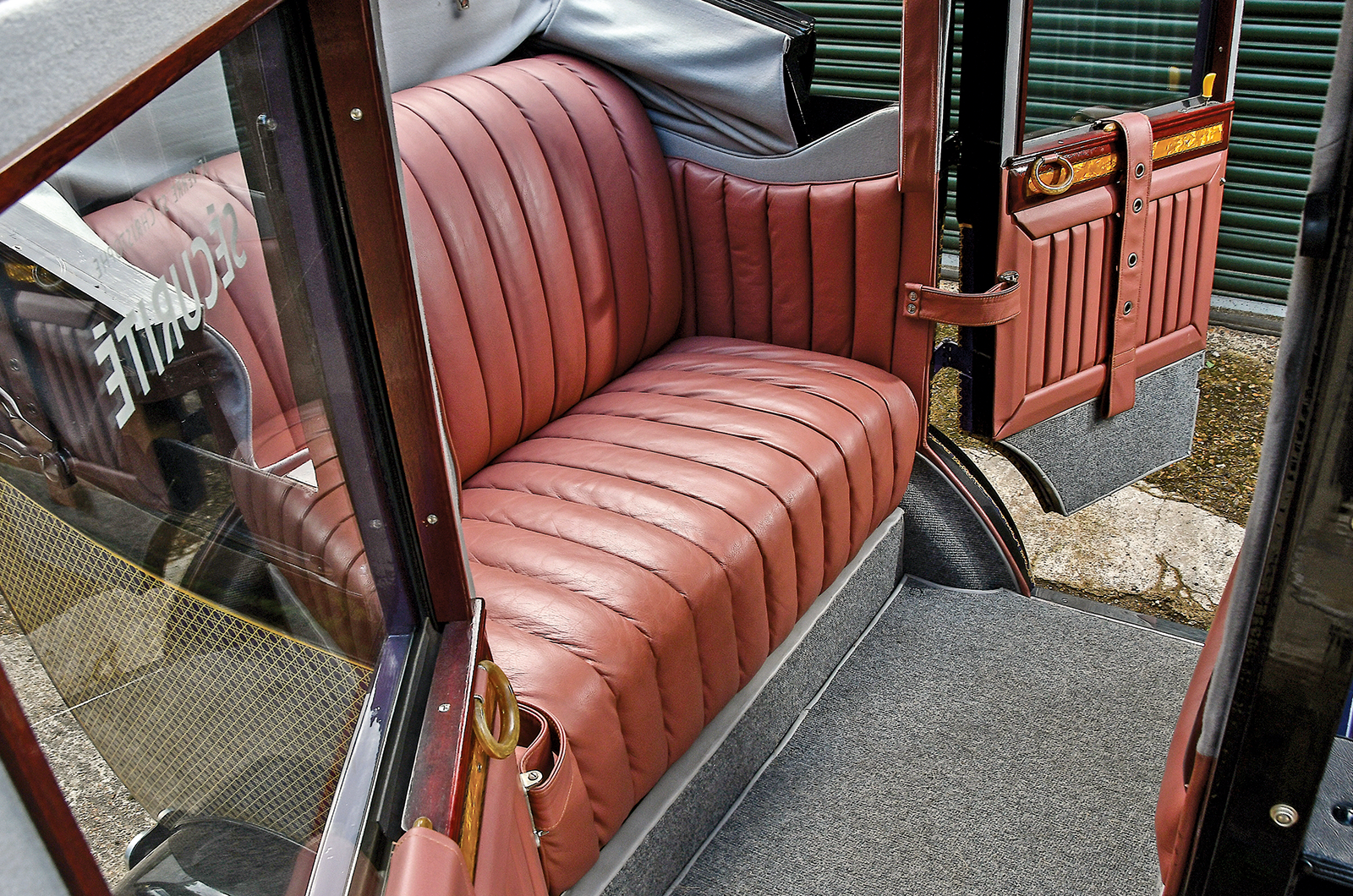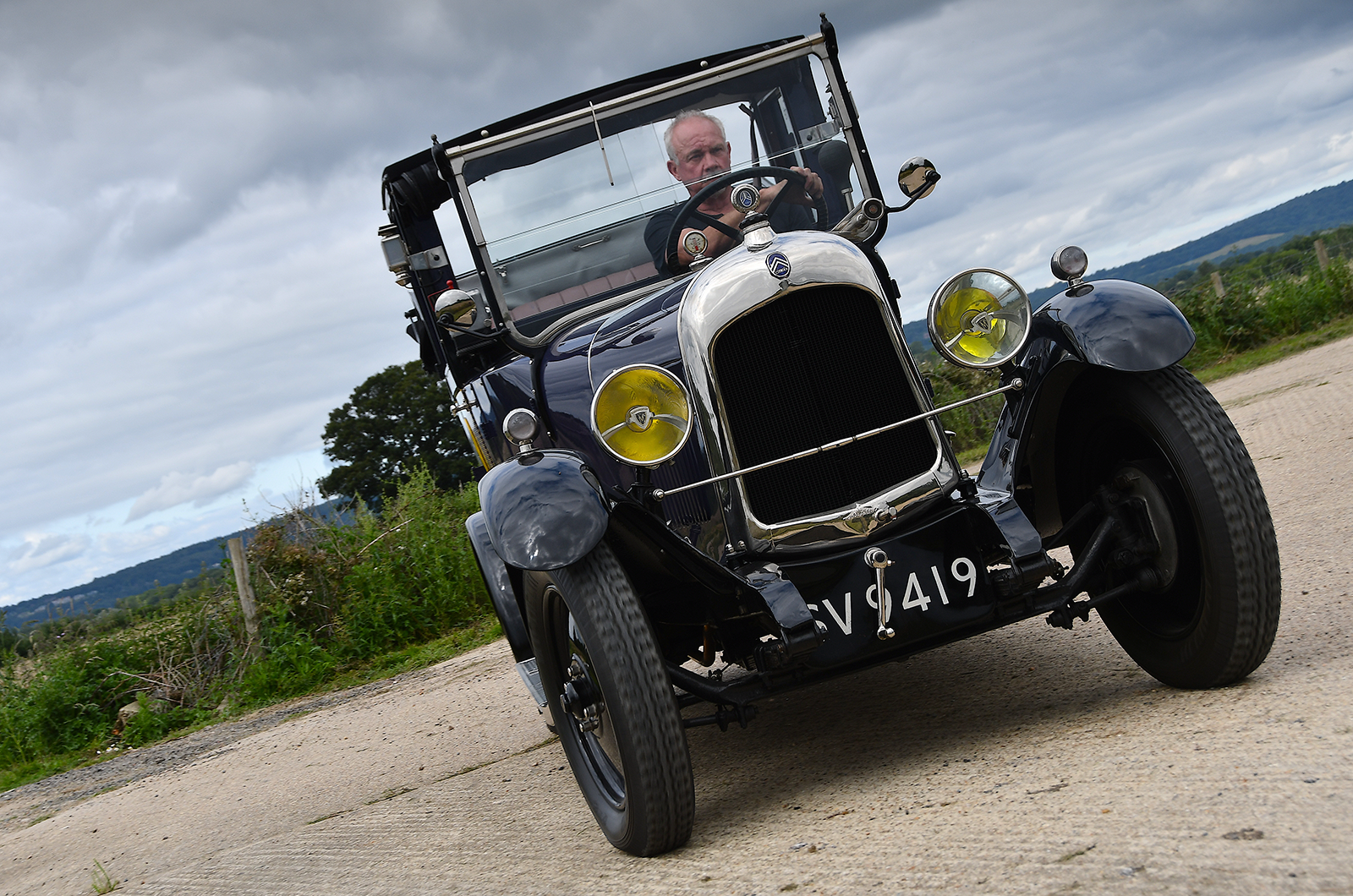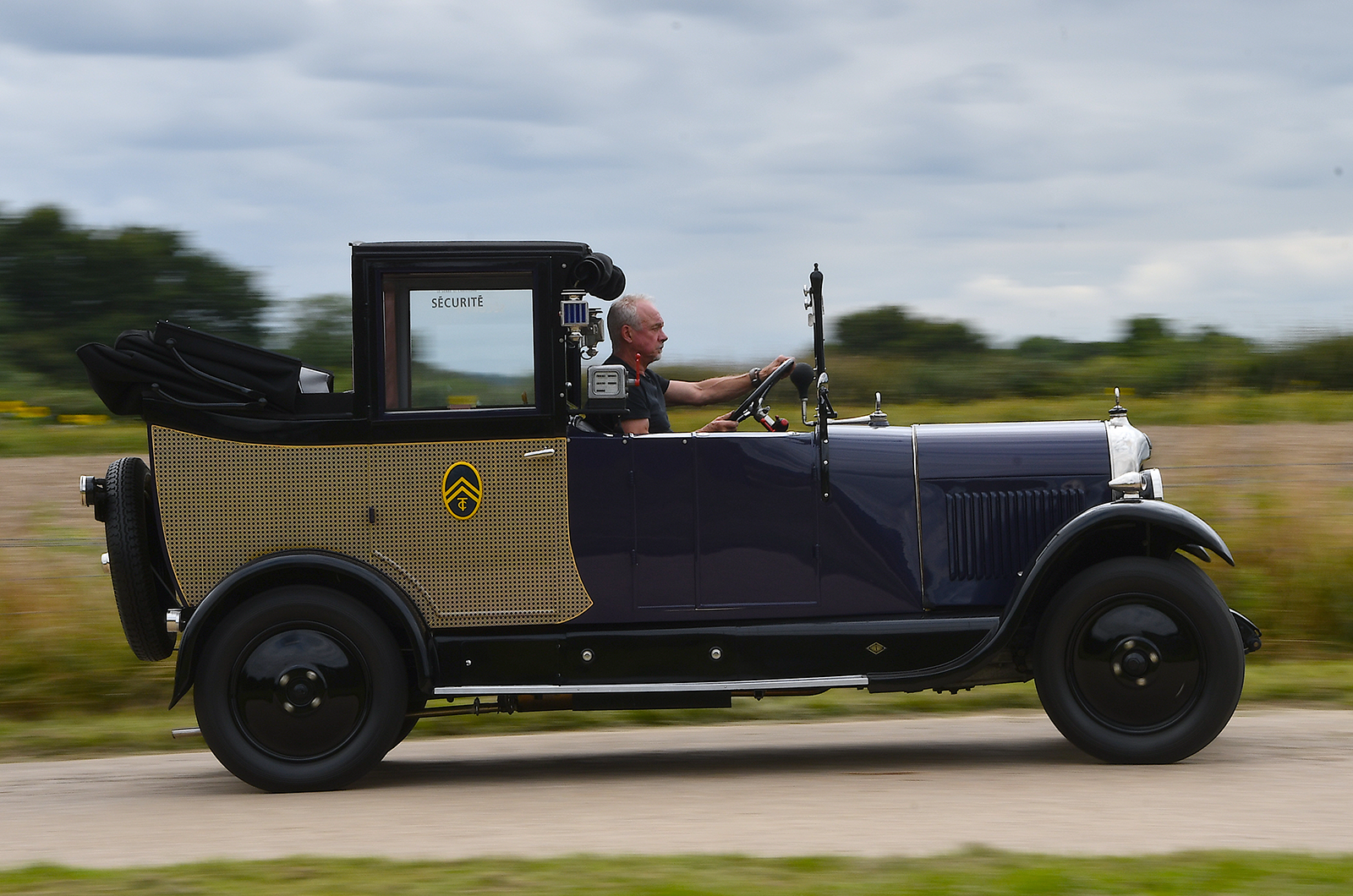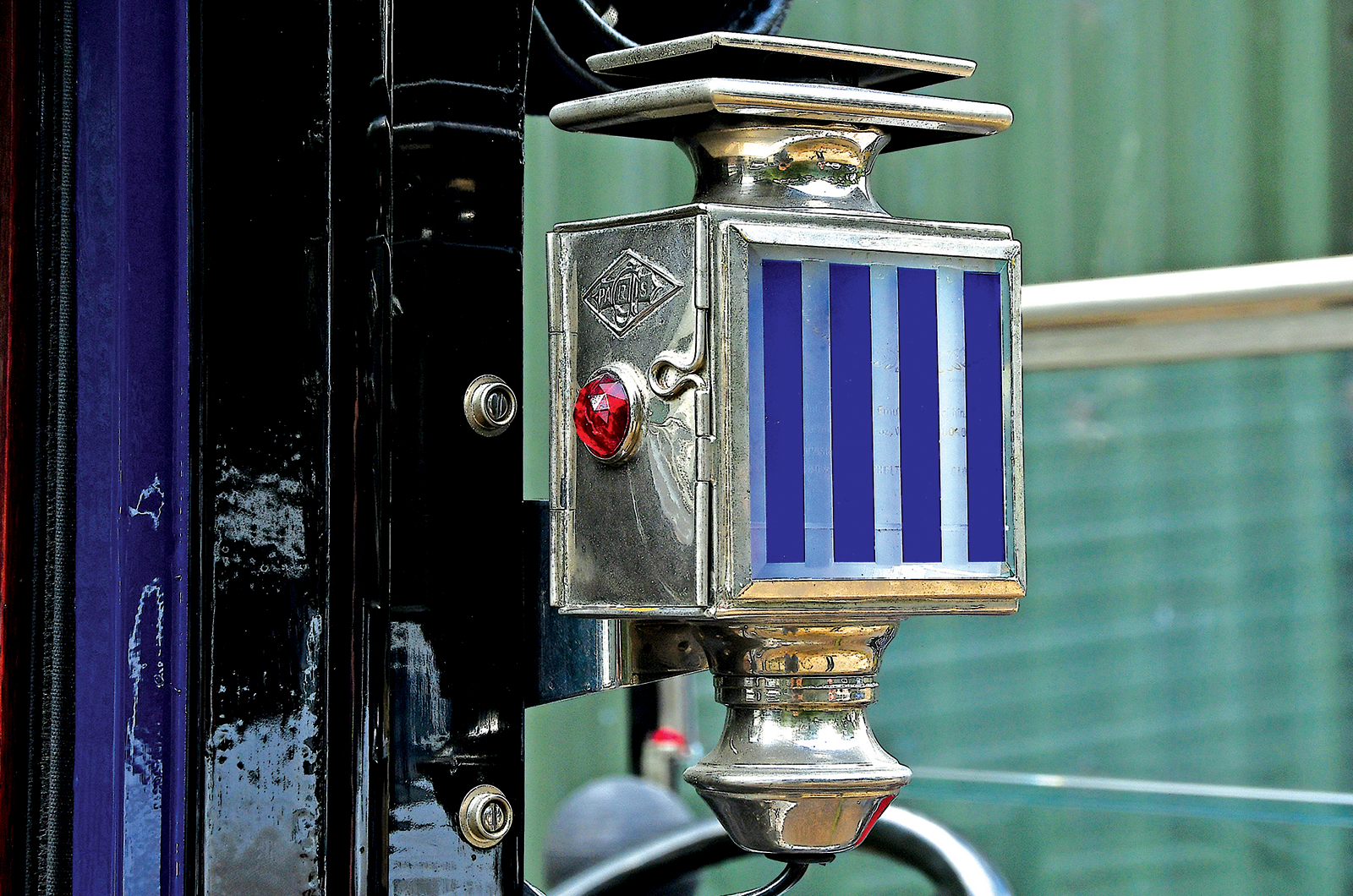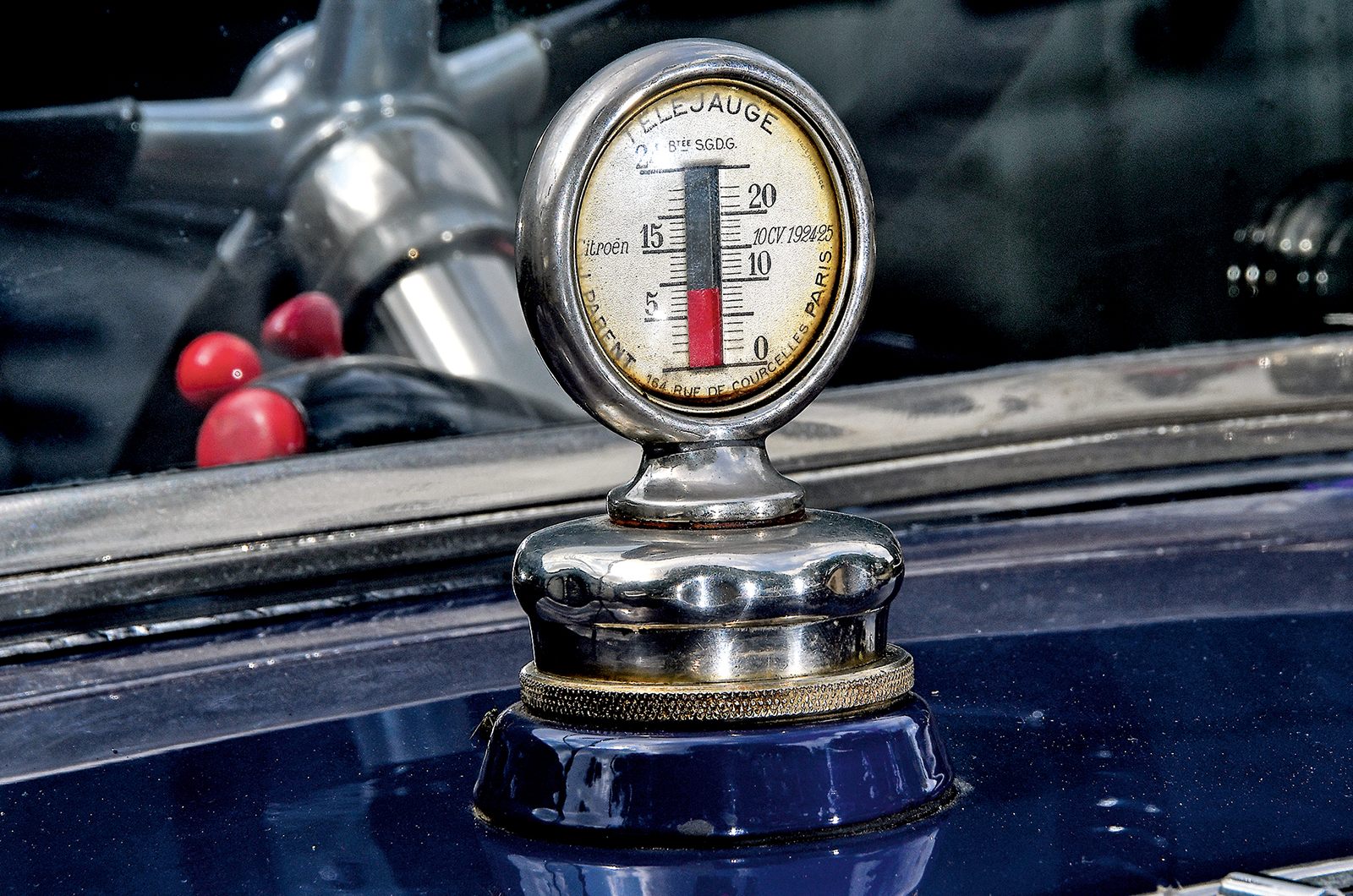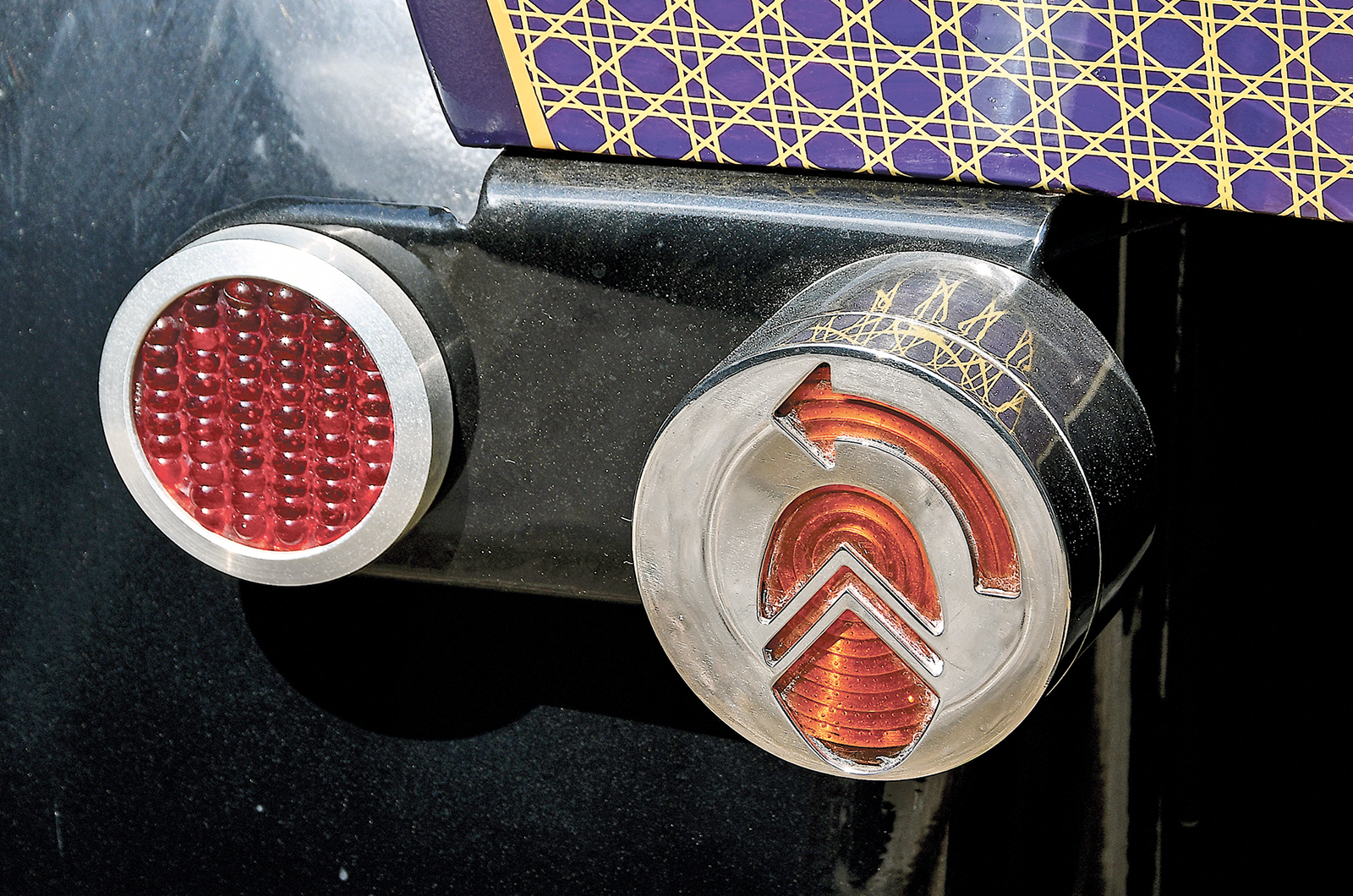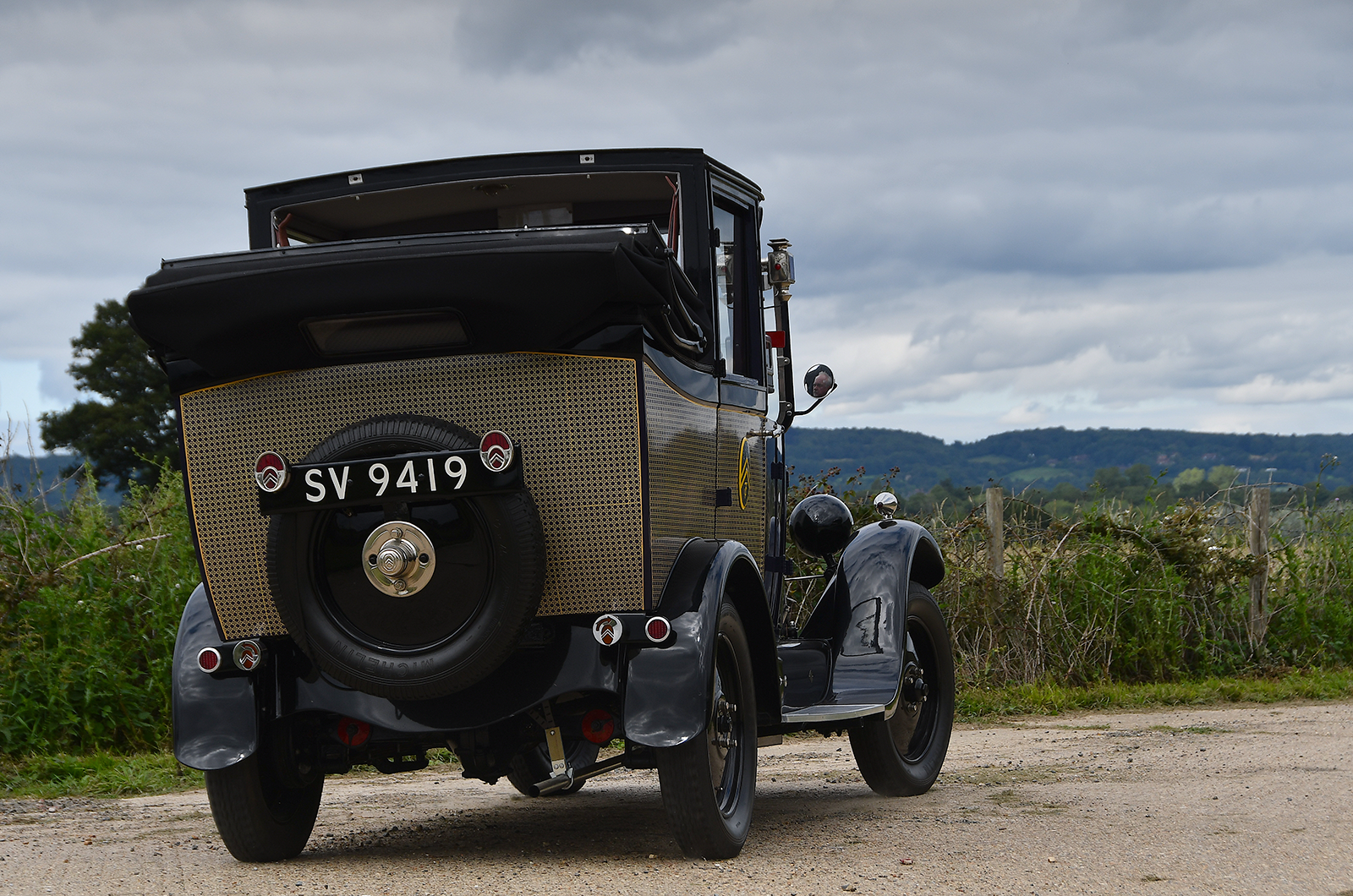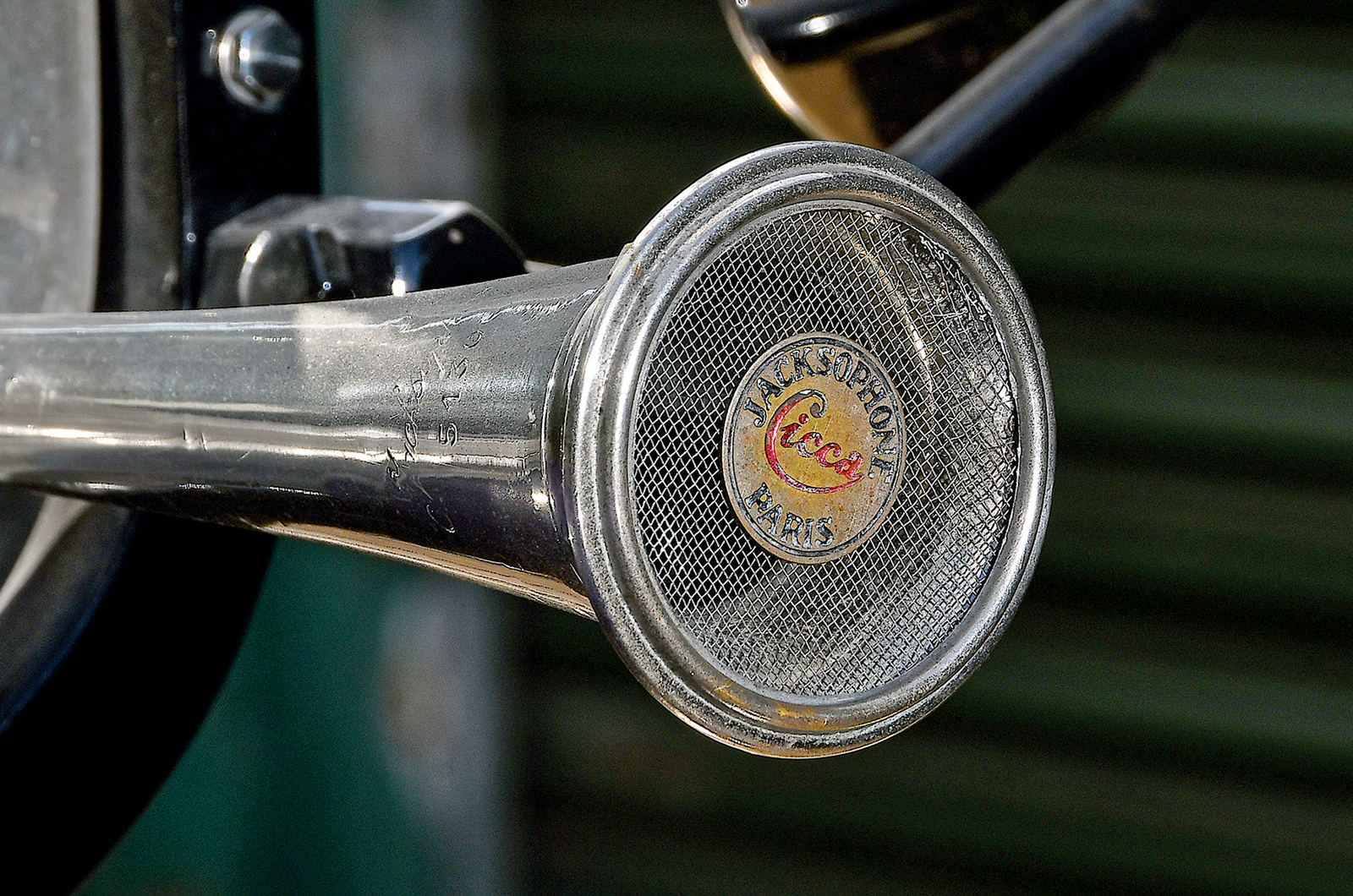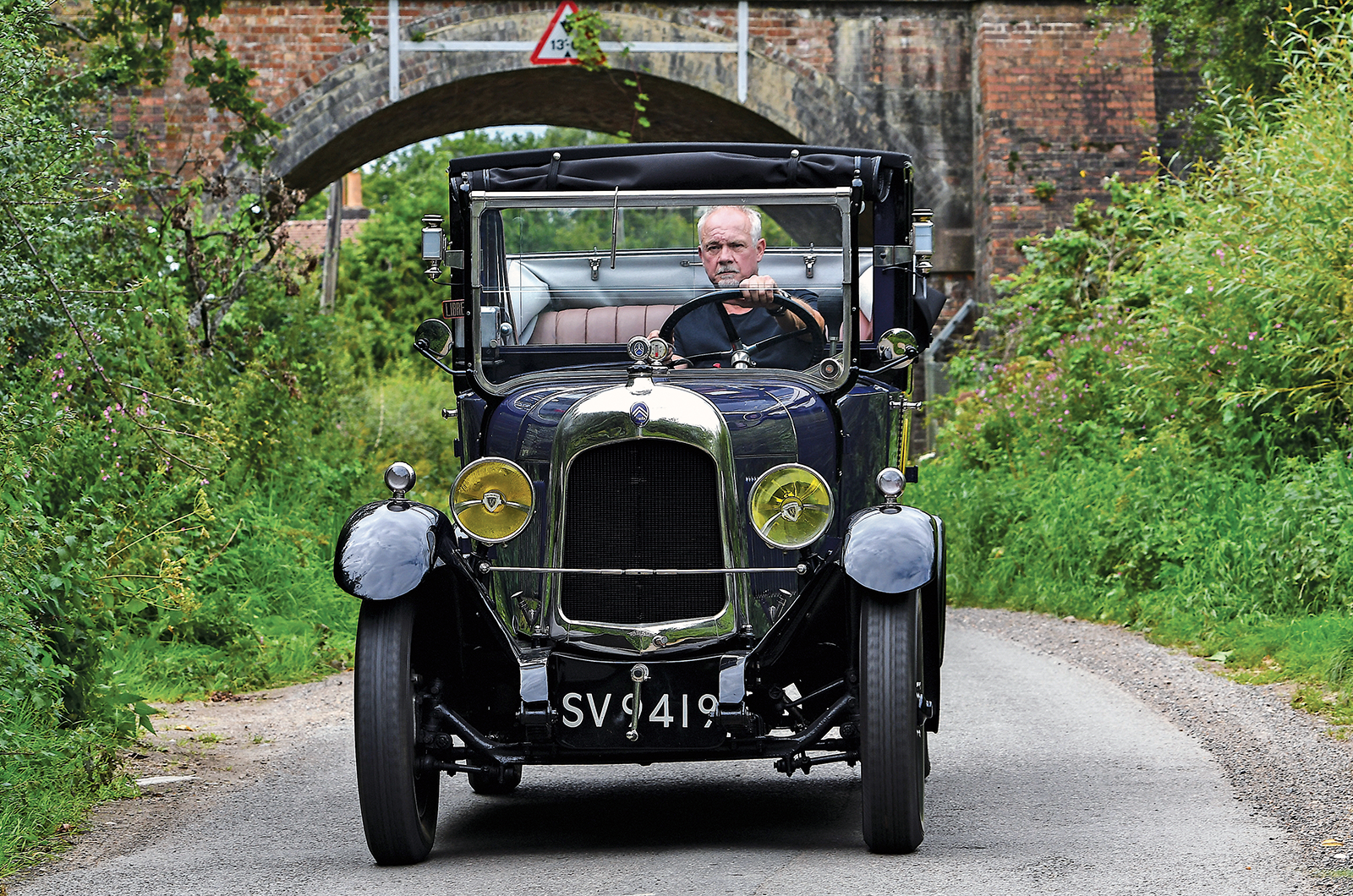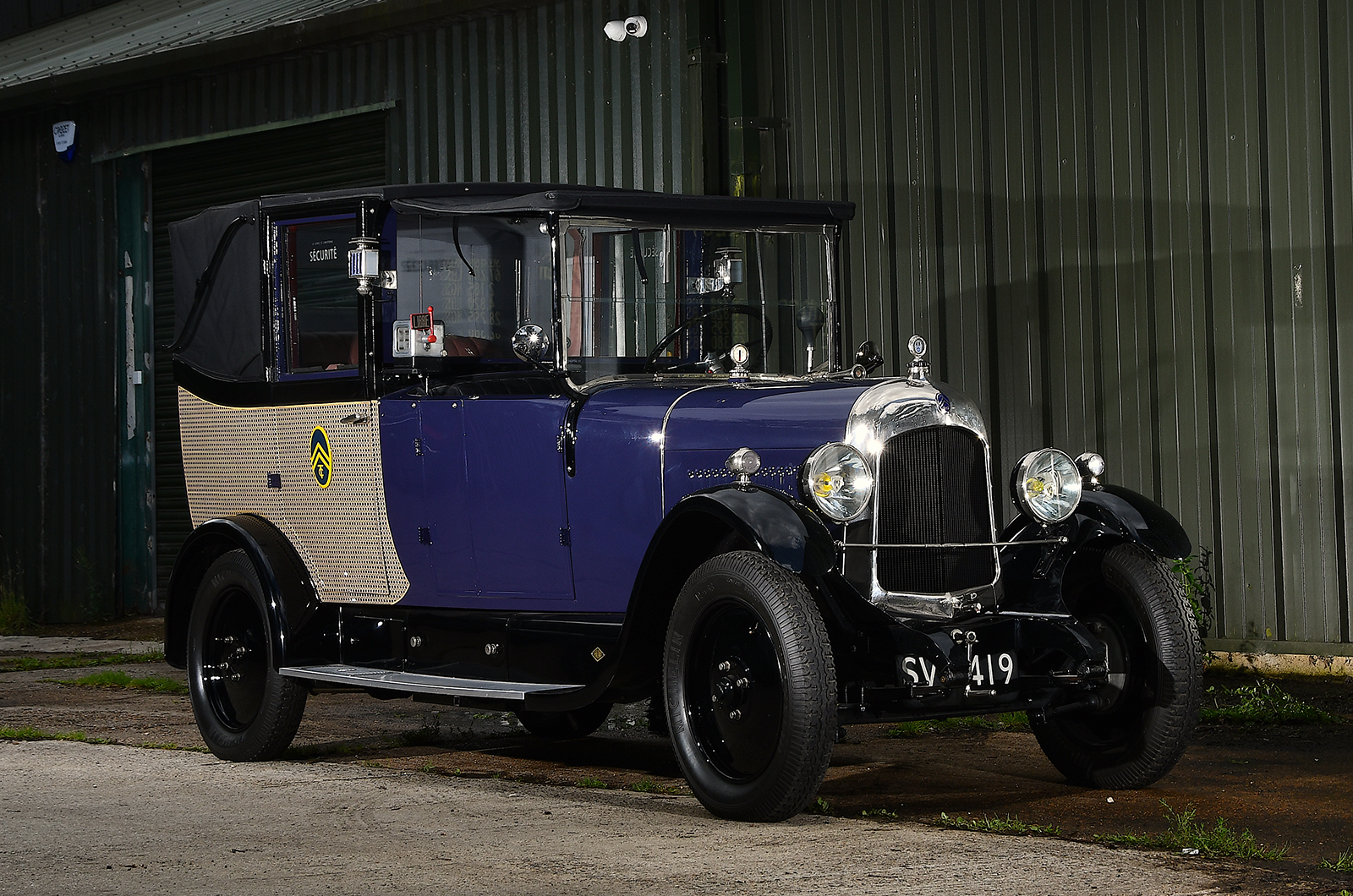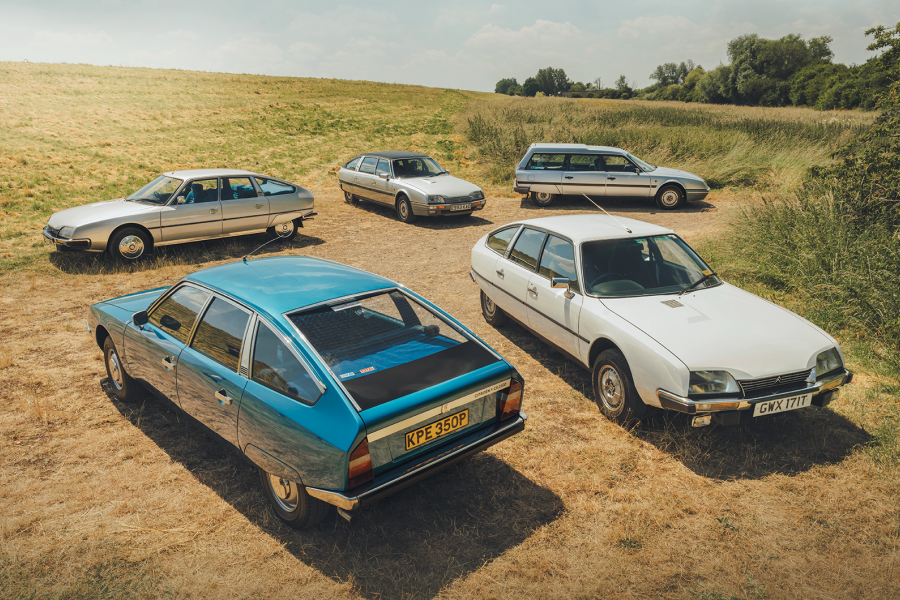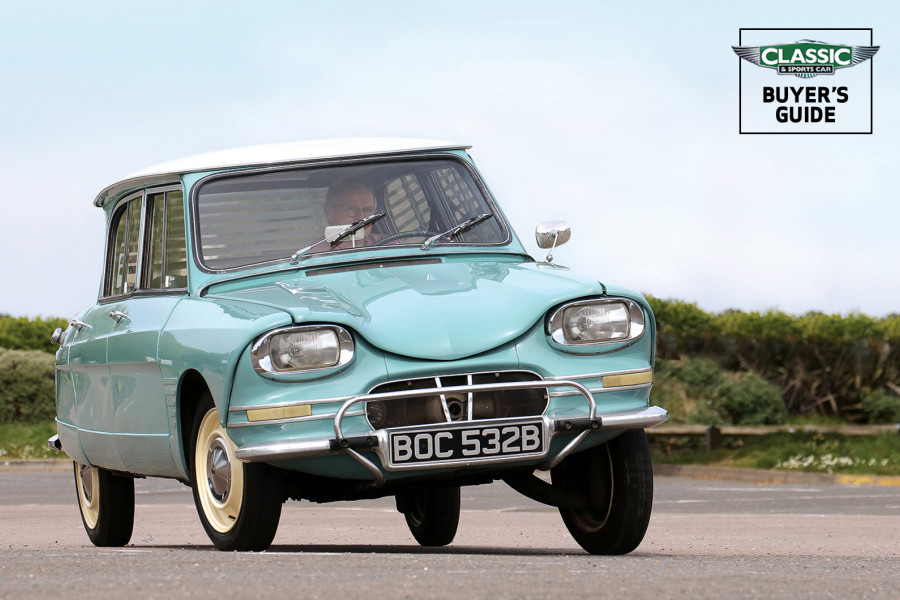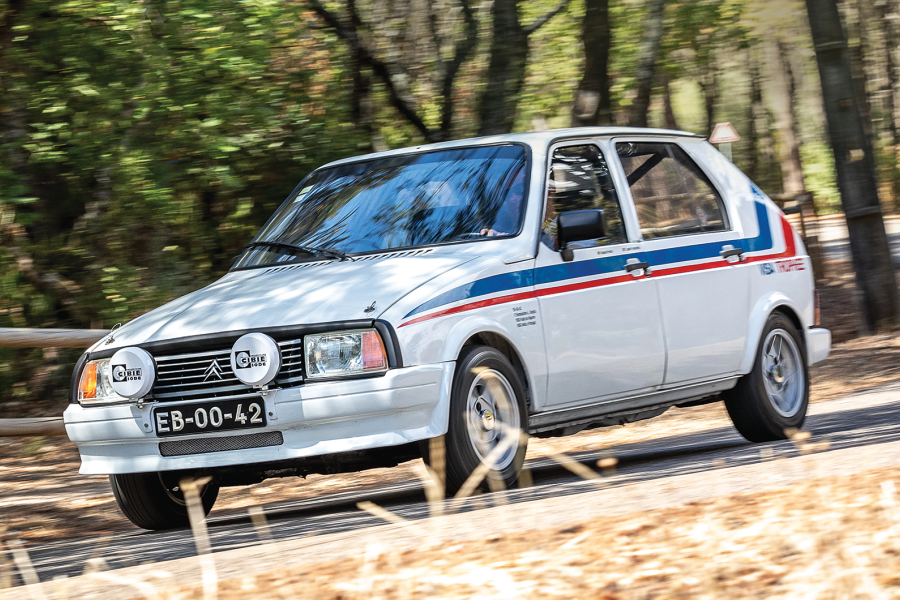Sit on the Citroën’s spongy rear bench and the first thing that will draw your eye is the delicate roof light. The basis of which, frankly, beggars belief.
“The plafonnier was made out of bits and bobs that he found in a brocante shop: an ashtray and an old lamp,” says de Little.
“Maurice cobbled the two together to make what looks like a period lamp. Those sorts of details make it.”
Bailey unearthed a working opera lamp at Paris show Rétromobile
Meanwhile an aged paper sign, copied from an AC4 taxi Bailey also restored, hides in plain sight above the division.
It’s a sordid secret of all Paris taxis, says de Little: “It alludes to runs out to the Hippodrome and Bois de Boulogne in the dead of night.
“I understand that there’s very little horse racing late at night at Longchamps… Basically, at that time a taxi was a mobile brothel.
“It was very plush; he’s done it in very soft leather, but ordinarily there would have been dainty little curtains and quite a lot of crushed velvet.”
This Citroën B12 eventually found a new role in the wedding-hire business
“And, yes, a man would take a dame de nuit out for the ride and that notice actually alludes to the cost of the fare,” says de Little.
“I think the ride back was free. Implicitly, the driver had to disappear and would have needed paying off as well.”
Some of the external details, such as the working opera lights and meter, were unearthed at Rétromobile.
The scuttle-mounted fuel gauge rises and falls with the level of the petrol in the tank
The meter, should it be properly connected up, works off the gearbox and is not faithfully fabricated but an original produced on 51 Rue Cardinet in Paris by the Société Nouvelle de Compteurs et Appareils de Précision.
The pièce de résistance for de Little is the petrol gauge standing proud on the scuttle behind the barrel bonnet: “The practice was to have the tank above the carburettor so you just had a simple gravity feed. That was splendid for its simplicity.
“He found it on a stand, in a box, and there was a Frenchman who was after it but he reached out and grabbed it.”
Although not of period, the Citroën’s stylised stop lights are a tasteful addition
“It is little more than a cork with a little indicator on the top of it, and it just rises and falls with the level of the petrol in the tank,” explains de Little.
“It is gloriously simple, when often with Citroën stuff it can be very clever but not really work.”
More aesthetically pleasing rather than particularly of the period are the stop lights, with double-chevrons laser-cut into them. While in no way original, they don’t look out of place.
The Citroën’s knobs and pull-rings for the doors are all the original bone or ivory
Bailey’s choice of colour did for de Little, though, and he’s darkened it via a diligent paintshop with a store of old ICI colour charts.
“Really it should be black,” he admits, “but the problem was the cannage had been overlaid on a Cadbury’s blue.
“He removed as much of the purple from the paint as possible and we got it down to basically a darkish blue with just a hint of red in it.
“You can’t see the point at which the new colour job actually segues into the old colour job where the cannage is.”
This B12 retains the standard Citroën gearbox, with three speeds plus reverse
Whether it would still carry the same majesty is moot, and there is merit to both Bailey’s belief that it deserves to be more celebrated and outlandish, and also to de Little’s that this car should be remembered as a working vehicle.
It certainly gets attention wherever it goes.
When Citroën marked its centenary at every available opportunity in 2019, the taxi starred on the main stand at the ExCeL centre. And found a new home.
The prospect of a Delage meant de Little had been trying to move the taxi on and it found a new line of work in the wedding-hire business.
The Citroën B12 has a period Cicca horn
Prior to that, de Little was asked by Citroën to take it to a dealer event at the NEC in Birmingham.
“The fact that this was a one-off Citroën going on 100 years old didn’t impact on [the attendees’] consciousness,” he observes.
The manufacturer became so used to the car that it finally came around to idea of buying it, but never progressed much further than a signal of intent.
The Citroën B12 has very soft suspension, no doubt a valuable commodity on broken roads
The next owners found favourable responses from the factory, too, but it eventually found its way into the classifieds instead.
After all, ‘Citroën’ doesn’t really have the same ring to it for a wedding as Rolls-Royce, and nor is piloting a 1920s car simple.
“It’s a standard – of the period – Citroën ’box, so it’s three speeds and arrière [reverse],” says de Little.
“It pulls nicely and the steering is light, but because of the high centre of gravity, being a tall ash body with lots of glass, it rolls a little bit.”
The Citroën B12’s meter should run off the gearbox
Stopping power is by front brakes and a drum on the gearbox for the handbrake.
Four-wheel brakes and servo assistance would have to wait for the subsequent B14.
Citroën’s independent suspension was still a couple of decades away, so half-elliptics stabilise the front with quarter-elliptics and shock absorbers at the rear.
De Little wants the car to be remembered as a working vehicle
“A lot of the B12s running around have lost them because they are relatively easy to remove for repair work and people never seem to bother to put them back on,” reckons de Little.
“Or people presume them not to be of any use or purpose.”
Step in and the taxi will lurch towards you, displaying just how soft that suspension is. A valuable commodity on broken 1920s roads, no doubt.
The B12 landaulet carries the badge of coachbuilder Chapelle & Jabouille
When setting it up, de Little looked to the track: “With all the handbooks of the period, Citroën’s certainly, there are no torque values – you use ‘by God by gum’ – and there’s nothing about setting up the suspension.
“I follow the technique that was used by MG: with the car standing on the flat, back off all the shock absorbers and then do them up tight, lift the car by the chassis near to a wheel and back off the shock absorber slowly and steadily until the axle begins to drop.
“At which point you have movement, albeit not a lot, and that was more or less the way they did it back in the day.”
De Little set out to complete Bailey’s classic Citroën in a way that did his work justice
De Little took on the car to finish Bailey’s vision, and mainly made it roadworthy and driving in a way that did his work justice.
“It’s old technology but it works,” he says, and it’s difficult to hear where his admiration for the car and his late friend melds.
Unlike the car, neither should be in short supply.
Images: John Bradshaw
Thanks to: Car and Classic and Oxted Classics
READ MORE
Why this is no ordinary Citroën Traction Avant
Rearguard action: meet the NSU Prinz family
Shifting sands: MG VA vs Riley 12/4
Jack Phillips
Volvo-owning Jack Phillips is a contributor to and former Deputy Editor of Classic & Sports Car
